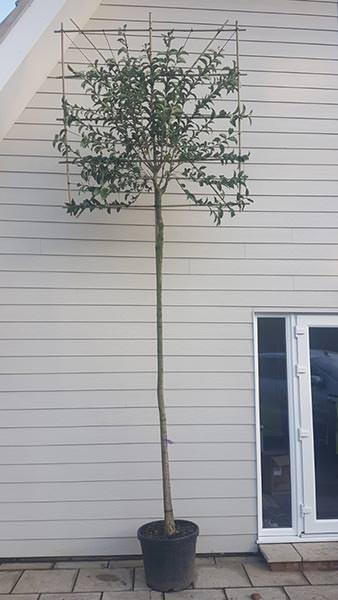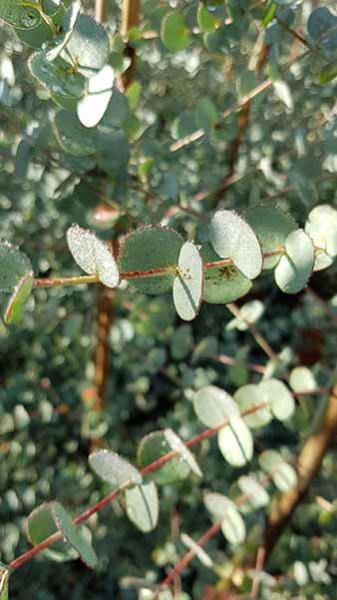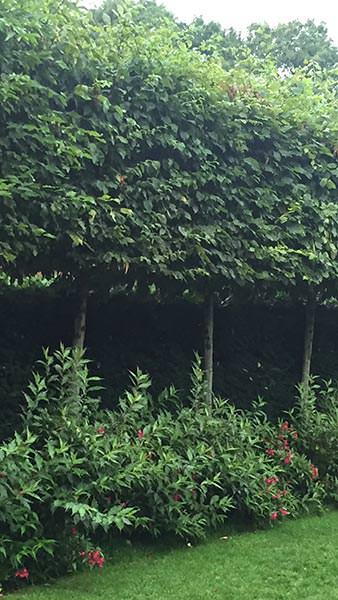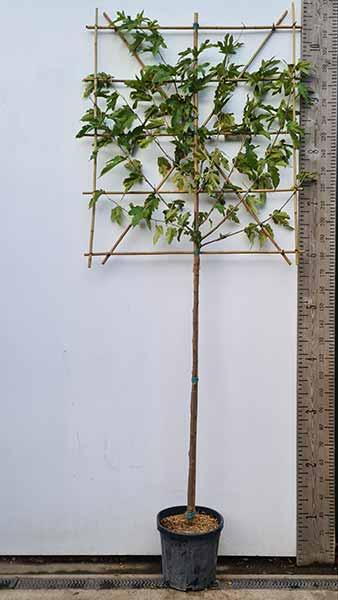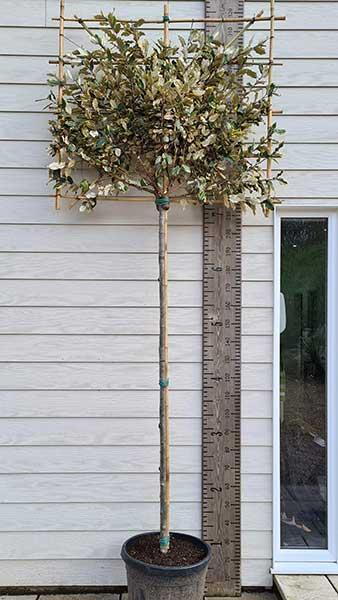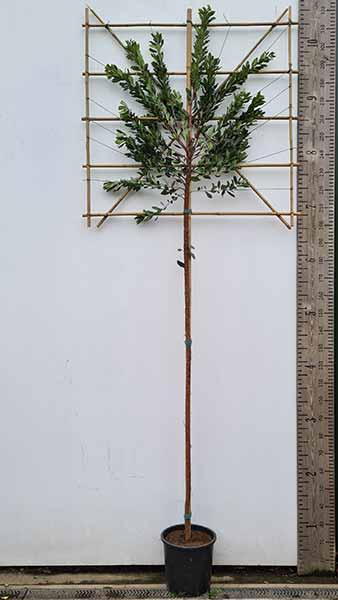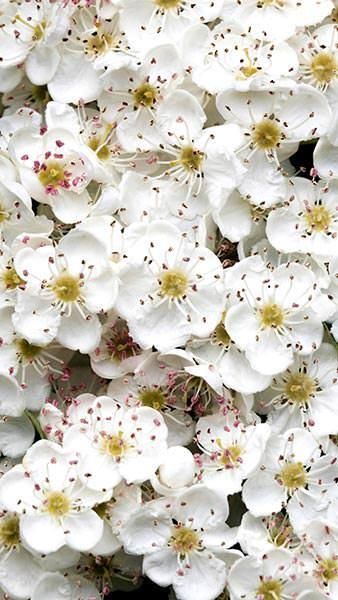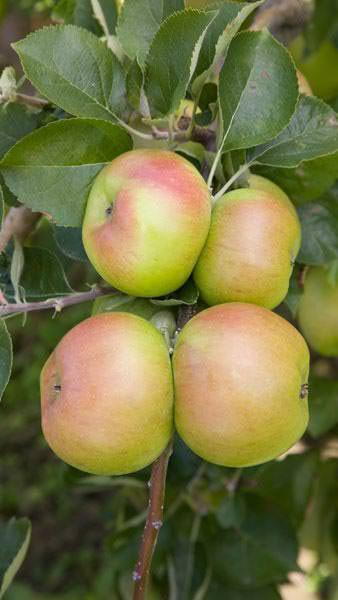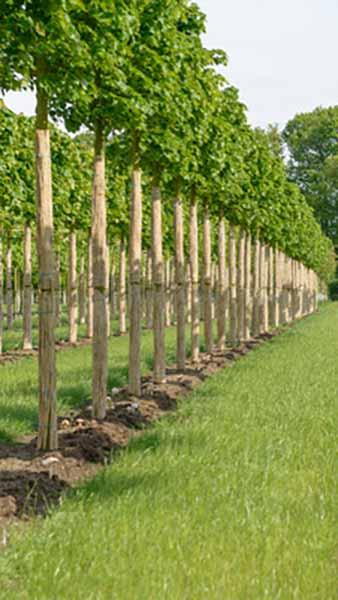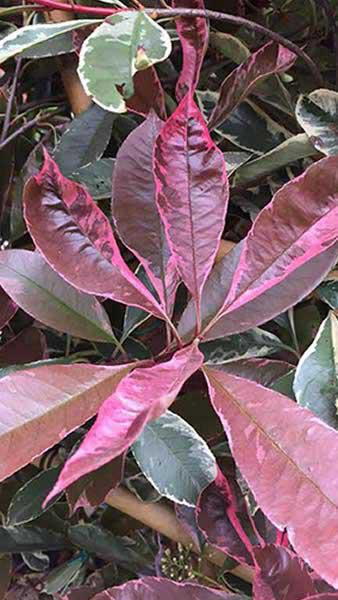Photinia Fraseri Pink Marble Cassini Pleached Trees UK
Photinia Fraseri Pink Marble Cassini Pleached TreesStrikingly colourful foliage and prunability make Photinia Pink Marble an ideal candidate for pleaching. A line of pleached photinias will create a colourful, evergreen screen with year-round interest in any garden or landscape setting. The marble in the name refers to the marbling effect of the leaf colour throughout the year, which includes an impressive array of reds, pinks, greens, ivory, bronze and burgundy.With clear stems or trunks of 80 – 90 cm tall, we refer to these particular photinias as half-standard sized pleached trees. The beauty is that they take up very little lateral space, making them ideal for screening in smaller gardens. Photinia Pink Marble in pleached form can be used for example to create a stilted hedge, or an ‘espaliered’ style hedge against a wall. They can also be used to create garden rooms, for above-fence or wall screening or as standalone ornamental trees, best displayed in a line. For this reason, we are offering a special price when you buy 3 plants. Our Photinia Fraseri Pink Marble plants are ready-pleached and keep their shape with regular pruning, which only needs to be done once or twice a year.To give it its full name, Photinia Fraseri Pink Marble Cassini (Christmas Berry or Pink Marble Photinia) is a relatively new variegated variety of Photinia that has many ornamental features, most notably show-stopping variegated leaf colour all year round.Like other Photinias, Pink Marble produces small, white, fragrant flowers in spring and red berry-sized fruit in autumn. However, this variety’s standout feature is its foliage. When the new leaves emerge in spring, they are a strikingly vivid pink and red, creating quite a display. As the leaves mature, the colour evolves to a glossy, dark green with an ivory-white edge or margin and with the occasional splash of pink and white. Red bronze tinged foliage follows in the autumn and the fruit, shaped like miniature apples, turn red as they ripen. They remain on the branches well into winter, providing food for the birds and butterflies. In winter, the foliage takes on a burgundy hue.Photinia Fraseri Pink Marble responds well to pruning and has a reasonably fast growth rate. Like all Photinias, it is a popular choice of hedging and for screens. Photinia are low maintenance plants that will grow in most well-drained soils. They are pollution tolerant and as a result, they do well in urban areas. In terms of aspect, preferably Photinia Pink Marble likes full sun but will also perform in partial shade.A note on Pleached TreesPleaching is a style of growing trees in a neat line, usually straight, on clear stems or trunks with the foliage a geometric square shape on top. Pleached trees originated in the 17th century and are making a comeback in contemporary gardens of today.You may also be interested in larger sized trees such as Photinia Red Robin Pleached. For stilted hedging you may also be interested in Eleagnus Ebbingei and Ilex Crenata. Other pleached trees include Pleached Hornbeam and pleached conifers such as Pleached Leyland Cypress trees.
